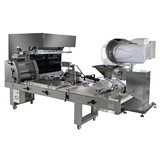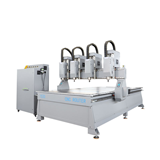Australia’s competitive advantages of resource availability, abundant energy sources, skilled labour force, available land, and stable investment conditions mean the outlook for both alumina refining and aluminium smelting is positive, but according to the Australian Aluminium Council (AAC), this does depend on the industry being given a level playing field on which to compete.
The Australian alumina and aluminium industry is Australia’s highest value-add processor of resources and the largest processed export earner. Operations in the Australian alumina and aluminium industries have a replacement value of over $50 billion and annually produce more than $14 billion of product.
The industry directly employs around 17 000 people, many in regional areas. Applying a typical multiplier of three this means the aluminium industry provides direct and indirect employment for around 45,000 people in Australia.
The ACC has just released its 2010 Sustainability Report, and according to the organisation, 2010 was a mixed year for the Australian aluminium industry as companies involved in bauxite, alumina and aluminium production continued to recover from the effects of the Global Financial Crisis.
The recovery was aided by increased global commodity prices on the back of strong growth in industrial demand.
Bauxite production bounced back from the slight dip in 2009, increasing around 3 per cent over 2009 levels to 71.5 million tonnes. Alumina production levels rose slightly (0.2 per cent) during 2010 to 20.3 million tonnes, with capacity increases by some operations balanced by reduced production in others.
Australia’s primary aluminium metal production declined slightly (0.6 per cent) to 1.94 million tonnes, with small increases in capacity across the industry offset by the continuation of 2009 reductions at the Portland smelter.
The price of aluminium continued to recover during 2010 – averaging around US $2,170, although some volatility was observed in the first half of the year with prices falling as low as US$1,930 in June 2010.
Water use per tonne of production was down 5 per cent over 2009, while fluoride emissions were down to 0.69kg per tonne of aluminium – less than half the global average.
Perfluorocarbon emissions were down to 0.12 tonnes of CO2-e per tonne of aluminium, 10 per cent
lower than in 2009 and 96 per cent lower than in 1990.
As in previous years the report also includes data on safety, employment, trade, greenhouse gas
emissions, land use and rehabilitation, recycling and spent pot lining.
AAC executive director Miles Prosser said the industry was committed to making key information available to stakeholders to show how the industry was managing specific outputs, and working to reduce the impacts of the production process.
"These figures confirm that the Australian aluminium industry is a valuable and responsible contributor to regional communities and the Australian economy," Prosser said.
"Our industry will continue to add value to Australia’s world class bauxite reserves, provided our
member operations are allowed to compete on a level playing field with our international competitors – a situation which is in jeopardy under the Government’s proposed Clean Energy Future package."






-160x160-state_article-rel-cat.png)













